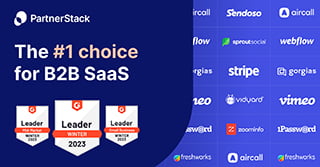Legal
GDPR, Data Protection & Marketing Opt-In

The whole business industry is buzzing with news of the new GDPR rules that are set to come into place by 25th May 2018.
These new rules are set to significantly impact businesses across all industries – never before has there been a time when companies have been more motivated to protect their marketing information and data than now.
The cost, should your business fail to comply with the new rules, is severe and is incredibly steep for micro and small businesses.
Manyondering the question: How spec is GDPR imposing itself on businesses? Is it just marketers that must comply with the new rules, or all companies with a client and non-client database for email marketing?
Many business owners are also wondering whether enforcers will target specific industries or whether the focus on compliance will be completely random. It’s already known that the real estate industry will be a target, but what other areas will be targeted?
Another question that many business owners are wondering is:
Why is it so hard to get people to opt into receiving business marketing emails again, and what can be done about it?
The issue is that for businesses to be able to continue to store people’s personal data, they have to opt-in once again, which means that many companies will lose valuable contacts from their databases due to GDPR.
Right now, many businesses are all asking the same question ‘can we store your personal details?’ this means that there is fierce competition – many companies are wondering what can be done about this.
To help you better understand GDPR, data protection, and marketing opt-in, below is a guide to everything businesses need to know.
What’s GDPR?
For any business that may not know what GDPR is, here’s an explanation and why it’s essential. GDPR stands for General Data Protection Regulation. This new set of rules simply changes how companies can gather, use, and store data.
This new regulation comes into effect on 25th May 2018 and covers all of Europe – it’s the most significant change in data protection laws over two decades.
The laws for managing data were created in the nineties, and data usage and software have changed significantly since then. This new set of rules is designed to alter how companies and public organizations handle data, decreasing the risk of data breaches and improving compliance.
So, bearing that in mind, what can businesses do regarding email marketing and GDPR?
Change your mindset
The most crucial step business owners can take is changing their mindset regarding GDPR, data protection, and marketing opt-in.
What it’s essential to remember is that when it comes to the onset of GDPR, it’s necessary to change your mindset and understand that quality is more important than quantity when it comes to your subscribers.
Think of it this way, when it comes to the people on your mailing list, it’s all well and good to have 10,000 subscribers. Still, if only half of them (5000) are relevant subscribers, the other half aren’t considered high-quality as they are irrelevant.
Is there no point wasting your time sending out emails to subscribers who aren’t interested in your business? That’s why it’s best to focus on quality subscribers over quantity.
Create an opt-in strategy
The next step your business needs to take is to create an opt-in strategy – to do this, you’ll need an intelligent design and a budget to work with. If you can find the original consent given by subscribers, you don’t need to create an opt-in system because you already have their support.
However, if you have subscribers you cannot find consent for, you need to ask permission to continue sending them emails and storing their details in your database. If this is the case, what you need is a marketing campaign that’s unique and eye-catching.
Ask yourself, how are you going to encourage people to opt-in to your emails – what will it take to do so successfully?
Create an opt-in campaign with a difference
As mentioned in the paragraph above, if you will successfully encourage people to opt into your email marketing, you need to create an opt-in campaign that’s unique and interesting and, most importantly, makes people want to opt-in. The question is, of course, how can you do this?
You must use the channels to communicate your campaign, including social media, the company’s blog, and mail.
You your campaign to tell people how valuable your marketing emails are and why they should opt-in – share information about your business and services that will inspire people and encourage them to opt-in to marketing emails from you.
If you get your marketing campaign right, you may end up finding that people are sharing it with their friends, because the value of opting in is clearly shown.
Follow up
When it comes to your campaigns, you must follow up on every aspect. This means being sure to share your success and thank your participants.
By sharing your success, you demonstrate how valuable your company can be, which may encourage more people to opt-in. By thanking your participants,, you make them feel valued, which may make them want to share your campaign with others.
It’s also a good idea to keep sharing even once a high number of people have opted in – the aim of this is to create a sense of fear of missing out on a good thing, which should encourage more people to opt in to your marketing emails.
You have everything your business needs to know about GDPR, data protection, and marketing opt-in. Hopefully, the above guide has answered any questions that you may have.







